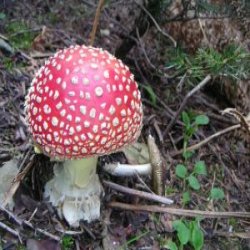 For thousands of years poisons have been used as a means of execution, a murder weapon and a way of committing suicide. Many of the ancient cultures understood and used poisons. Poison can be found in both natural and man made forms. Poisons can come in many configurations (gas, powder, liquid etc.) and death by poison is often mistaken for death by natural causes. It has been said that poison tends to be the weapon of choice for women rather than men.
For thousands of years poisons have been used as a means of execution, a murder weapon and a way of committing suicide. Many of the ancient cultures understood and used poisons. Poison can be found in both natural and man made forms. Poisons can come in many configurations (gas, powder, liquid etc.) and death by poison is often mistaken for death by natural causes. It has been said that poison tends to be the weapon of choice for women rather than men.
One of the most noted cases of execution by poison was that of Socrates. Socrates, was a Greek philosopher who was found guilty of corrupting the minds of the young men in Athens. Socrates was sentenced to die by drinking poison hemlock.
In WWII the Germans used hydrogen cyanide in some of their notorious gas chambers. Cyanide was also a favorite poison used by high members of the German Third Reich to commit suicide. It was used by Eva Braun and other officers and their families at the end of the war. General Rommel is believed to have been forced to commit suicide by using cyanide.
The Americans used a form of cyanide in their gas chambers to carry out state executions.
Signora Toffana was one of the most proficient poisoners of all time. In the later part of the 17th century, in Italy, she sold a poison cream to many wealthy women. This cream was sold as a beauty aide which women would wear when their husbands were around. This deadly cream contained arsenic. She is believed to be responsible for making more than 600 hundred wives, very wealthy widows. She was eventually sentenced to death for her crimes.
In France poisoning was colorfully referred to as Inheritance powder.
There is a famous painting depicting the Queen of Poland being poisoned by her secretary, Gian Lorenzo Pappacoda. It was claimed that he poisoned her on behalf of the King of Spain, who did not wish to pay back the money he owed to the Queen. The painting is entitled The Poisoning of Queen Bona.
Lucrezia Borgia was born in Italy, about the year 1480. Her name has been linked throughout the years with the use of poison as a means of disposing unwanted people. It is rumored that she wore a hollow ring which she would fill with poison. She would then slip the poison into her victim’s food or drink.
Cyanide was used to poison the notorious Russian monk, Rasputin.
Emperor Claudius is said to have been poisoned by his wife the Empress Agrippa. Her poison of choice was said to be mushrooms. After the death of her husband, Agrippa ruled until her son Nero became of age. He is said to have often joked that mushrooms were the food of the gods.
Diamond dust was said to be the poison of choice of the Queen of France. Catherine de Medici was actually Italian, she married into the French royal family. Her famous cabinet has been the source of countless rumors throughout history. While some believe that the cabinet and all its cupboards held mundane objects like trinkets and letters, others are more inclined to believe that it was here where she stored her poisons.
Paracelsus is known as the Father of toxicology. Born in 1493, Paracelsus was an astrologer, alchemist, botanist, and physician. He is credited with the famous saying, “All things are poison and nothing is without poison, only the dose makes a thing not poison.”
Considered to be one of Britain’s most notorious mass murders, Mary Ann Cotton was found guilty of using arsenic to rid herself of four husbands and countless children. They believe that she killed at least 20 people before she was tried and found guilty. She was hung on the 24th of March in the Dunham Goal. There is a children’s skipping rhyme about her and her crimes.
Mary Ann Cotton
She’s dead and she’s rotten
She lies in her bed
With her eyes open wide
Sing, sing, oh what can I sing
Mary Ann Cotton is tied up with string
Where, where? Up in the air
Sellin black puddings a penny a pair.
